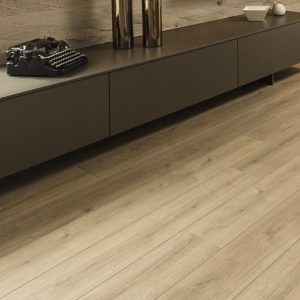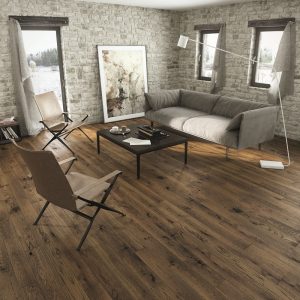25 Jan 2024
How Temperature Changes Affect Flooring
Discover How Temperature Changes Affect Flooring and what options are best for different environments.
Understanding the Relationship Between Temperature and Flooring
Temperature has a significant impact on various flooring options. Understanding the relationship between temperature and flooring is crucial for selecting the right option for your space. Different types of flooring materials expand and contract with changes in temperature. This expansion and contraction can lead to various issues such as warping, buckling, or gaps between the floorboards.
In general, How Temperature Changes Affect Flooring can affect the stability and structural integrity of flooring materials. It’s important to consider the temperature fluctuations your flooring will be exposed to when choosing the right option for your home or commercial space.
The Impact of Temperature on Laminate Flooring
Laminate flooring is another popular flooring option that is susceptible to temperature-related effects, and understanding the science behind these phenomena is crucial for ensuring its optimal performance. Laminate flooring typically consists of multiple layers, including a high-density fiberboard (HDF) or particleboard core, a decorative layer, and a protective wear layer. Each of these layers can react differently to temperature changes, impacting the overall stability and appearance of the flooring.
Temperature can affect laminate flooring through a process known as thermal expansion and contraction. When exposed to high temperatures, the molecules within the materials expand, causing the flooring to swell. Conversely, in colder temperatures, the molecules contract, leading to potential gaps between the laminate planks. This natural response to temperature changes can result in issues such as buckling, warping, or separation between planks if not addressed appropriately.

In regions with extreme temperature variations or spaces with underfloor heating, it becomes essential to choose laminate flooring designed to withstand these conditions. High-quality laminate flooring is often equipped with advanced technologies and features, such as moisture-resistant cores and specialized locking systems, to mitigate the impact of temperature-related issues. The HDF or particleboard core is treated to resist swelling or contraction, helping maintain the structural integrity of the flooring.
Moreover, proper installation practices are crucial when dealing with temperature-sensitive laminate flooring. Leaving sufficient expansion gaps around the perimeter of the installation area allows the material to expand and contract without causing damage. Additionally, using the recommended underlayment can provide thermal insulation, helping regulate temperature and reducing the risk of temperature-induced problems.
In summary, understanding the science behind thermal expansion and contraction is vital when considering laminate flooring, especially in areas with temperature variations. By selecting high-quality laminate with features designed to resist these effects and ensuring proper installation, homeowners can enjoy durable and visually appealing flooring that stands up to the challenges posed by temperature changes.
How Temperature Changes Affect Vinyl Flooring
Luxury vinyl flooring can be influenced by temperature fluctuations, and understanding these effects is crucial for ensuring the longevity and performance of the flooring material. Temperature can impact luxury vinyl in various ways, with one notable aspect being the adhesive used during installation. In areas with high temperatures or underfloor heating systems, it becomes paramount to use the right high-temperature adhesive when opting for the glue-down installation method. Standard adhesives may not withstand elevated temperatures, leading to potential issues such as adhesive failure, warping, or even damage to the vinyl planks.
In response to the challenges posed by temperature changes, the industry introduced Stone Plastic Composite (SPC) and Wood Plastic Composite (WPC) vinyl flooring. Both SPC and WPC are categorized as rigid core vinyl, providing enhanced stability and resilience in the face of temperature variations. The rigid core is typically composed of a combination of natural minerals (in the case of SPC) or wood flour (in the case of WPC), providing superior dimensional stability. This means that these types of luxury vinyl are less prone to expansion and contraction due to temperature fluctuations, making them ideal for use in areas with extreme temperatures or underfloor heating systems.
The creation of SPC and WPC vinyl has revolutionized the flooring industry, offering a reliable solution to temperature-related challenges. Their rigid core construction not only minimizes the impact of temperature changes but also makes them suitable for a variety of environments, including high-temperature areas and spaces with underfloor heating. This innovation ensures that homeowners and designers can confidently choose luxury vinyl flooring that combines aesthetic appeal with durability, even in environments where temperature variations are a concern.
The Effects of Temperature on Engineered Wood Flooring
Engineered wood flooring is designed with layers that influence its response to temperature changes. Comprising a real wood veneer, a core of plywood or high-density fiberboard (HDF), and a stabilizing backing layer, each component plays a role in how the flooring handles temperature fluctuations.
Wood naturally expands in higher temperatures and contracts in colder conditions due to changes in moisture content. Engineered wood, with its layered structure, is more resilient than solid wood but still requires careful consideration. Without proper precautions, issues like cupping, warping, or gaps between planks may arise.

To ensure the longevity of engineered wood flooring, it’s crucial to choose options specifically designed to handle temperature variations. High-quality products often feature advanced manufacturing techniques and moisture-resistant finishes, mitigating the impact of temperature-related expansion and contraction.
During installation, acclimating the flooring to the environment is essential. This allows the material to adjust to the temperature and humidity conditions of the space, minimizing potential issues. Leaving expansion gaps around the installation area provides room for the material to expand without compromising its structure.
In summary, engineered wood flooring is a great choice for spaces with fluctuating temperatures. By selecting the right product, acclimating it properly, and following meticulous installation practices, homeowners can enjoy the warmth and beauty of real wood flooring while minimizing the impact of temperature variations.
The Challenging Impact of Temperature on Solid Wood Flooring
Building on the information provided about luxury vinyl, laminate, and engineered wood flooring, let’s complete the picture with details on temperature considerations for solid wood flooring, including insights into installation methods.
Solid wood flooring, with its enduring aesthetic appeal, requires particular attention in the context of temperature fluctuations. Unlike engineered wood, solid wood, being a single, homogeneous piece, is more responsive to environmental changes. The natural expansion and contraction of wood due to temperature variations can pose challenges if not handled with care.
As temperatures rise, wood tends to expand, and in colder conditions, it contracts as moisture content changes. Solid wood is particularly sensitive to these shifts, leading to potential issues like warping, cupping, or gaps between planks. To mitigate these concerns, acclimating solid wood flooring to its environment before installation is crucial. This process allows the wood to adjust to the temperature and humidity conditions of the space, minimizing the risk of problems.
However, the choice of installation method also plays a significant role in how solid wood reacts to moisture and temperature changes. Utilizing the correct flexible adhesive or employing the secret nailing method is considered best practice. This helps secure the flooring in a way that accommodates natural expansion and contraction, reducing the likelihood of issues related to temperature fluctuations.
Conversely, employing the floating method with PVA glue may present challenges. This method involves gluing the tongue and groove joints together, and while PVA glue is a common adhesive, it may not provide the necessary flexibility for accommodating wood movement. This rigidity can lead to problems when the wood expands, potentially causing the flooring to buckle or separate.
In summary, whether it’s luxury vinyl, laminate, engineered wood, or solid wood flooring, understanding the nuances of each material in relation to temperature is crucial. For solid wood flooring, in particular, meticulous acclimation, selecting appropriate installation methods, and avoiding problematic practices like floating with PVA glue contribute to a durable and aesthetically pleasing floor that gracefully adapts to temperature changes.
Choosing the Right Flooring for Temperature Fluctuations
When considering flooring options in environments with temperature fluctuations, each material has its pros and cons. Luxury vinyl, particularly Stone Plastic Composite (SPC) and Wood Plastic Composite (WPC), is designed with a rigid core that minimizes the impact of temperature changes. Laminate flooring, if chosen with features like moisture-resistant cores, can also withstand variations in temperature. Engineered wood, known for its stability, performs well in fluctuating temperatures, provided it’s of high quality and properly installed. Solid wood, while timeless, requires meticulous attention to temperature considerations, including acclimation and choosing suitable installation methods.
In conclusion How Temperature Changes Affect Flooring can have many factors the best option for flooring in areas with temperature fluctuations depends on specific needs and preferences. Luxury vinyl, especially SPC and WPC variants, may be an excellent choice for its durability and resilience. Laminate and engineered wood can also perform well when chosen with features that enhance stability. Solid wood, while classic, demands extra care to manage temperature-related challenges. Ultimately, a thoughtful approach to material selection, quality, and installation methods is key to ensuring that flooring not only looks appealing but also withstands the tests of time and temperature variations.
You can find all of our flooring options and matching accessories on our website here.



 Quickstep
Quickstep COREtec
COREtec Egger
Egger Balterio Collection
Balterio Collection Chene Firmfit
Chene Firmfit Luvanto
Luvanto Belle Flooring
Belle Flooring Capital
Capital Luvanto Design
Luvanto Design Luvanto Click
Luvanto Click TLC Vinyl Flooring
TLC Vinyl Flooring Rhinofloor
Rhinofloor Kaindl
Kaindl Lifestyle Floors Love AQUA
Lifestyle Floors Love AQUA Polyflor
Polyflor Life Flooring
Life Flooring Capital Creation
Capital Creation LG Hausys
LG Hausys Fusion Flooring
Fusion Flooring Krono Swiss
Krono Swiss Columbus Flooring
Columbus Flooring Kersaint Cobb
Kersaint Cobb Bostik
Bostik Meister Flooring
Meister Flooring Krono Original Xonic
Krono Original Xonic Palletforce
Palletforce Moduelo
Moduelo